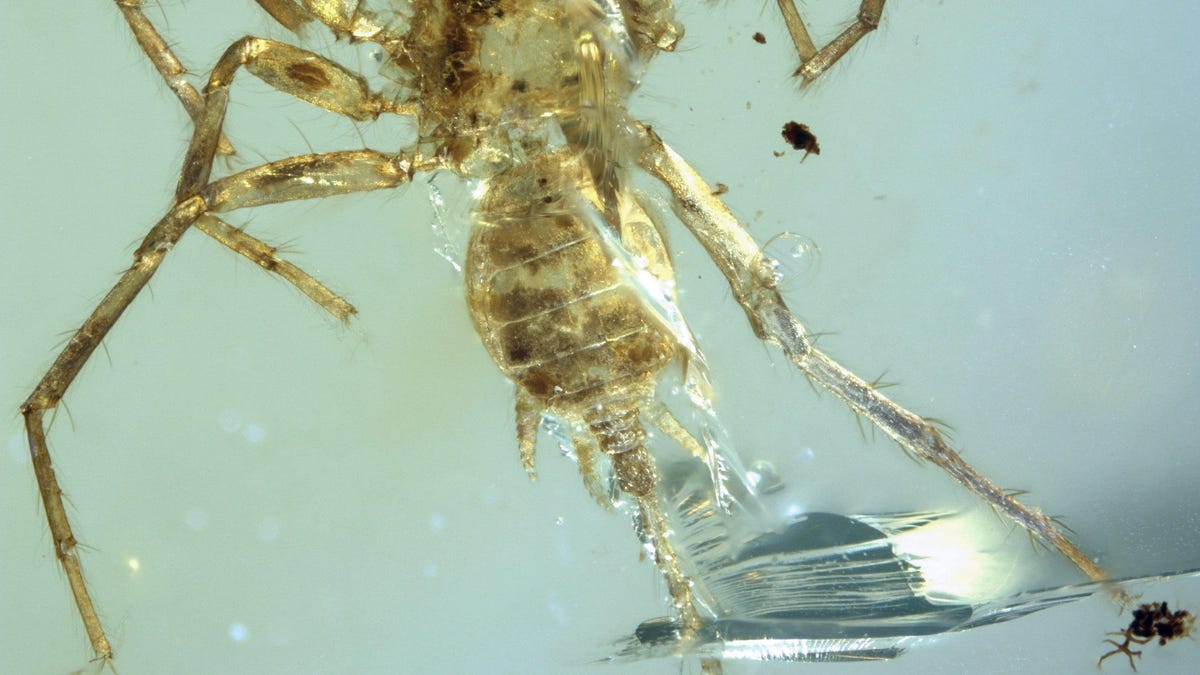Tailed spider found in amber will crawl into your nightmares
Let your scientific curiosity override your fear as you learn about a fascinating ancient arachnid with a tail on its backside.
Don't worry, arachnophobes. A newly discovered species of arachnid sporting a tail off its rear is about 100 million years old, so you're not likely to find it creeping around in the corners of your house.
An international team involving University of Kansas paleontologist Paul Selden studied the mid-Cretaceous critter, which is trapped in a piece of amber from Myanmar. They published their findings this week in the journal Nature Ecology & Evolution, suggesting the species is part of a lineage of tailed spiders.
An artist's concept drawing shows Chimerarachne.
An artist's illustration imagines what the spidery creature might have looked like in its natural habitat. The tail lends it an exotic look that spider-fearing folk will likely find unsettling.
The ancient arachnid bears a resemblance to modern spiders. It sports fangs and rear spinnerets for producing silk. What really stands out is what what Selden calls a "flagelliform appendage," which resembles a tail. "It's for sensing the environment," he says. "Animals that have a long whippy tail tend to have it for sensory purposes."
Selden had previously studied a much older tailed arachnid, but it lacked the silk-making spinnerets of this new find. That positions the 100-million-year-old spider, now named Chimerarachne, as a sort of stepping stone between those early arachnids and modern spiders.
The team discovered four specimens of the tailed arachnid. If it makes you feel any better, they're all tiny, with body lengths of about a tenth of an inch (2.5 millimeters), though the tail adds an extra 3 millimeters.
Selden speculates the itsy-bitsy spiders likely lived around trees, which explains how they got caught up in the fossilized tree resin. It's unknown if they made webs like we associate with modern spiders.
While you won't find Chimerarachne hanging about behind your toilet, there's a possibility tailed arachnids could still exist today in remote parts of southeast Asia. "We haven't found them," says Selden, "but some of these forests aren't that well-studied, and it's only a tiny creature."
'Alexa, be more human': Inside Amazon's effort to make its voice assistant smarter, chattier and more like you.
Rebooting the Reef: CNET dives deep into how tech can help save Australia's Great Barrier Reef.


